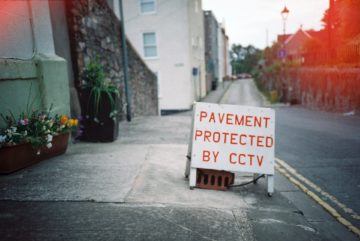Erin McElroy, Meredith Whittaker, and Nicole E. Weber in Public Books:
 Throughout the pandemic, new surveillance systems—used by landlords, educational institutions, and employers—have converged, capturing new forms of data and exerting new forms of control in domestic spaces. COVID-19 prompted bosses and schools to accelerate the deployment of surveillance and tracking systems. As the pandemic drags on, many are still monitoring and assessing remote learners and workers in their most intimate environments. Landlords, meanwhile, took the pandemic as a time to promise “touchless” convenience and increased control over the homes of their tenants, rushing to install tracking systems in renters’ homes. Whatever the marketing promises, ultimately landlords’, bosses’, and schools’ intrusion of surveillance technologies into the home extends the carceral state into domestic spaces. In doing so, it also reveals the mutability of surveillance and assessment technologies, and the way the same systems can play many roles, while ultimately serving the powerful.
Throughout the pandemic, new surveillance systems—used by landlords, educational institutions, and employers—have converged, capturing new forms of data and exerting new forms of control in domestic spaces. COVID-19 prompted bosses and schools to accelerate the deployment of surveillance and tracking systems. As the pandemic drags on, many are still monitoring and assessing remote learners and workers in their most intimate environments. Landlords, meanwhile, took the pandemic as a time to promise “touchless” convenience and increased control over the homes of their tenants, rushing to install tracking systems in renters’ homes. Whatever the marketing promises, ultimately landlords’, bosses’, and schools’ intrusion of surveillance technologies into the home extends the carceral state into domestic spaces. In doing so, it also reveals the mutability of surveillance and assessment technologies, and the way the same systems can play many roles, while ultimately serving the powerful.
Abolitionist organizers and scholars have long demonstrated the ways in which the carceral state exists well beyond prisons, jails, and police. As Michelle Alexander reminds us in her foreword to the excellent book Prison by Any Other Name, “‘Mass incarceration’ should be understood to encompass all versions of racial and social control wherever they can be found, including prisons, jails, schools, forced ‘treatment’ centers, and immigrant detention centers, as well as homes and neighborhoods converted to digital prisons.”
More here.
